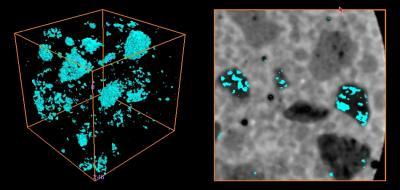In the business of concrete making, what's old—even ancient—is new again.
Almost 1,900 years ago, the Romans built what continues to be the world's largest unreinforced solid concrete dome in the world—the Pantheon. The secret, probably unknown to the Emperor Hadrian's engineers at the time, was that the lightweight concrete used to build the dome had set and hardened from the inside out. This internal curing process enhanced the material's strength, durability, resistance to cracking, and other properties so that the Pantheon continues to be used for special events to this day.
But it is only within the last decade or so that internally cured concrete has begun to have an impact on modern world infrastructure. Increasingly, internally cured concrete is being used in the construction of bridge decks, pavements, parking structures, water tanks, and railway yards, according to a review* of the current status of the new (or old) concrete technology just published by the National Institute of Standards and Technology (NIST).
The virtues of internally cured concrete stem from substituting light-weight, pre-wetted absorbent materials for some of the sand and/or coarse aggregates (stones) that are mixed with cement to make conventional concrete. Dispersed throughout the mixture, the water-filled lightweight aggregates serve as reservoirs that release water on an as-needed basis to nearby hydrating cement particles.

X-ray microtomograph (left) shows pores (blue) that remain within lightweight aggregates (LWAs) after water has migrated from the pre-wetted materials during the first day of hydration. In the two-dimensional image (right), the emptied pores are superimposed over the original microstructure (hydrating cement paste is white, sand is light grey, and LWA is dark grey), illustrating the detailed pore structure of LWA particles.
(Photo Credit: NIST)
According to one study cited in the review, bridge decks made with internally cured, high-performance concrete were estimated to have a service life of 63 years, as compared with 22 years for conventional concrete and 40 years for high-performance concrete without internal curing.
"As with many new technologies, the path from research to practice has been a slow one, but as of 2010, hundreds of thousands of cubic meters" of the lighter and more durable material have been successfully used in U.S. construction, write the report's co-authors, NIST chemical engineer Dale Bentz and Jason Weiss, Purdue University civil engineering professor.
Compared with conventional varieties, internally cured concrete increases the cost of a project by 10 to 12 percent, Bentz and Weiss estimate on the basis of bridge-building projects in New York and Indiana. The increased front-end cost, they write, must be evaluated against the reduced risk of cracking, better protection against salt damage, and other improved properties that "should contribute to a more durable structure that has a longer life and lower life-cycle costs," they write. "Further, this could have substantial benefits in a reduced disruption to the traveling public, generally producing a more sustainable solution."
The 82-page report summarizes the current practice and theory of internal curing, reviews project experiences and material performance in the field, and describes opportunities for research that could lead to enhancements in the material.
Source: National Institute of Standards and Technology (NIST)